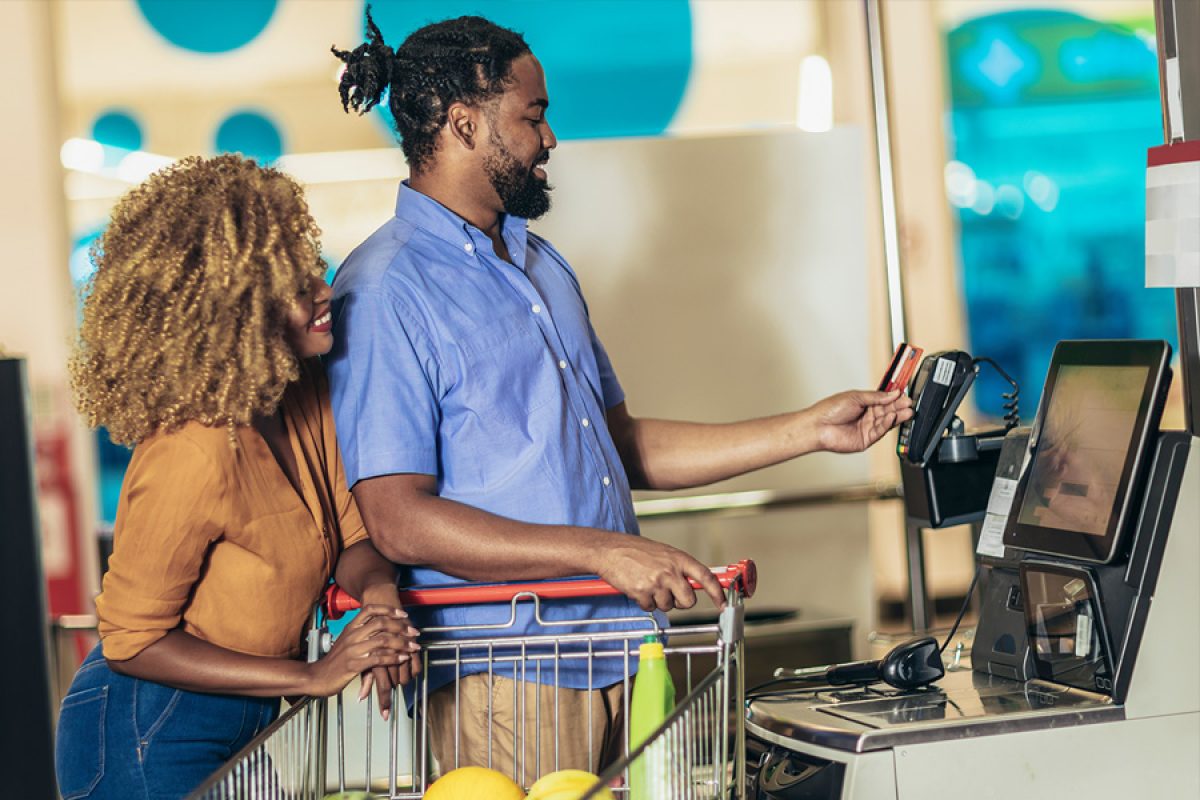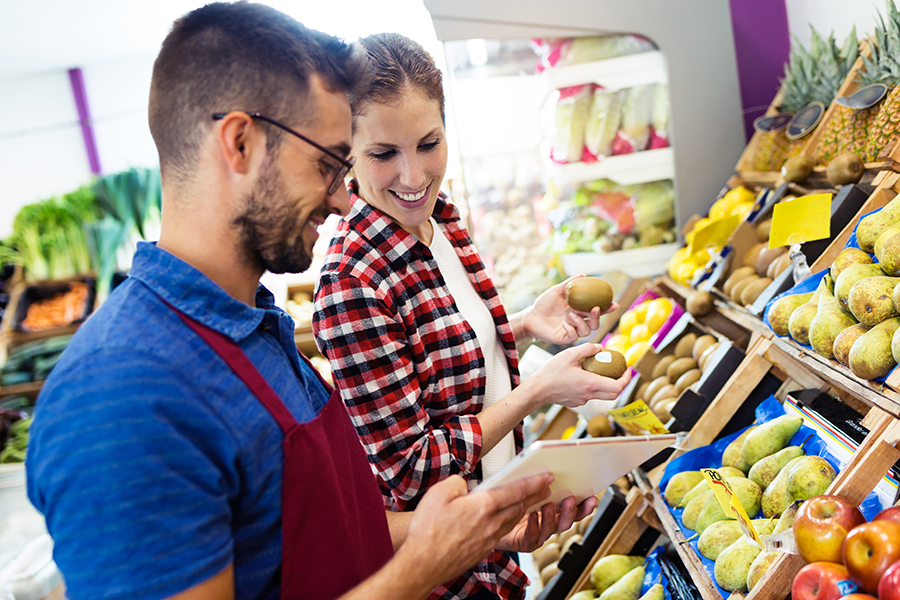Independent grocers facing challenges related to the industry’s digital transformation received valuable insights at the 2024 NGA Show. Attendees had the opportunity to learn about a range of topics, from current trends and opportunities for growth to tips for successful grocery store POS and back-office technology implementation.
Our picks for the top six takeaways from The NGA Show follow. Consider factoring these insights into your decision-making as you build out your business strategy for the remainder of 2024 and beyond.
Self-checkouts are still relevant.
A study of Drexel University in January 2024 made waves when it found that attended checkouts in retail, not self-checkouts, are more likely to earn customer loyalty. However, the study also found that when grocers frame self-checkout as a rewarding experience, loyalty is similar to shoppers who opt for assisted checkout. Then, a CNN Business report compiled a list of additional self-checkout cons, including an increase in loyalty or membership card fraud, merchandise losses, customer errors, and intentional shoplifting.
However, insights from the NGA Show echo a Supermarket News LinkedIn poll that indicates that the majority of grocers see the challenges as something to overcome rather than as cause to abandon self-checkout completely. The benefits of the self-checkout model, including a lower demand for labor, smaller footprint, and less waiting in line for shoppers are worth tackling security issues. Grocers are exploring technology, such as computer vision integrated with grocery store POS to ensure customers don’t miss items when scanning, to minimize losses. Employee education can also contribute to better self-checkout experiences for shoppers—and grocers.
An all-in-one management platform boosts efficiency.
A grocer at The NGA Show told us that he feels like he spends all his time managing different IT systems. Standalone grocery store POS systems, back-office solutions, eCommerce platform, accounting and bookkeeping solution, and loyalty software require work to update and maintain integrations. Furthermore, as consumers demand more digital and self-service options, the problem will only compound as grocers deploy new solutions.
The answer is using comprehensive grocery store software with fully integrated modules for managing transactions and the back office. A platform that includes both grocery store POS and back-office management modules allows data to flow freely where needed for efficiency and accuracy. It also gives managers visibility into the entire operation for informed decision-making when purchasing, managing inventory, and pricing.
From an IT management perspective, an all-in-one platform eliminates the need to maintain separate solutions and integrations. Furthermore, if grocery store POS is browser-based and device-agnostic, it doesn’t require loading a client onto POS terminals and mobile devices. IT teams or your reseller partner can deploy it in less time and with less effort than with legacy software.
Grocers focus on influencing buying decisions.
Thought leaders at The NGA Show offered advice to independent grocers about competing with big box stores. Grocers can see an increase in basket size by using data from their grocery store POS software to determine high-traffic areas of the store and displaying in-demand products and items that customers often purchase as impulse buys. Grocers can also make effective use of color or digital displays to capture shoppers’ attention and create urgency with limited-time promotions and cross-merchandising.
Personalizing promotions based on loyalty program or shopper history data can also increase revenue. More customers respond positively to relevant offers, increasing conversions.
NGA urges grocers to take advantage of the Double Up Food Bucks program.
The NGA reminded independent grocers to make sure they’re taking advantage of the Double Up Food Bucks program expanded to grocery stores during the COVID-19 pandemic, a Supplemental Nutrition Assistance Program (SNAP) produce incentive. The program works with LOC Software to automatically recognize qualifying SNAP transactions and prints a barcoded coupon. The cashier scans the coupon to apply the discount and the system automatically updates data—no other intervention is required.
The program allows grocers to help alleviate food insecurity, providing a valuable service to the communities they serve. It can also help build customer loyalty and revenues as shoppers return to claim this benefit.
Grocers must implement scalable technology.
Many of the sessions at The NGA Show were forward-looking. The future of the grocery industry will involve serving a new generation of shoppers and implementing new technologies to meet their expectations. The Progressive Grocer’s 75th Consumer Expenditures Study found that Gen Z and millennial shoppers plan to shop both online and in physical stores and plan to use contactless delivery and in-store pickup more in coming years. Gen Z shoppers are also more likely to purchase prepared foods than older shoppers, which requires order and fulfillment management capabilities.
Accommodating these omnichannel grocery shoppers requires solutions that enable data sharing and personalization on every channel. An all-in-one grocery store POS and back-office software system will allow grocers to monitor and manage omnichannel activity to provide consistent customer experiences regardless of how shoppers engage. Grocers investing in technology today must ensure it meets those needs now and adapt to consumer expectations in the future.
It’s time to modernize your loyalty program.
PYMNTS research found that grocery store loyalty programs are the most popular, with 61.3% saying they’re most interested in receiving offers from them than from any other type of retailer. However, standing out in a crowded market requires moving toward rewards programs that will resonate with customers and increase traffic and revenues.
A simple, points-based system for discounts may be effective in some markets, but grocers can explore other options to influence future purchases. Partnering with non-branded fuel retailers to offer customers rewards at the pump is one effective strategy. Grocers can also enhance loyalty programs by giving members exclusive coupons, discounts on online ordering or delivery fees, or allowing customers to donate rewards to local schools or charities. Flexible loyalty software integrated with your grocery store POS solution is key to creating the program that will deliver the best results.
Make It a Great Year
The NGA Show always provides inspiration and information that grocers can use to course correct and to innovate. This year, speakers stressed implementing flexible, scalable technology that allows you to improve operational efficiency, enhance customer satisfaction and position your business competitively. Consider how you can use those insights to put your business on the path to success.
To learn more about fully integrated grocery store POS and back-office solutions that will help you stay ahead of the curve, contact us.




